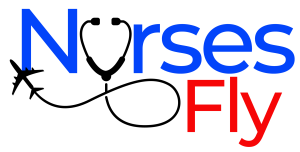Nursing Education and Changes in Health Care Information Technology, Connected Class Room & Learning Promotion
Connected Classroom Using Digital Technology to Promote Learning In Nursing Education
Nursing faculty continually face the arrival of new technologies that affect their clinical practice and teaching. There are new tools for assessing and monitoring patients, delivering medication or fluids, charting medications, and documenting patient care. In addition, new health care practices, medications, treatments, and wearable technologies are announced in the press almost daily.
Nursing organizations such as the National League for Nursing (NLN) and the American Association of Colleges of Nursing (AACN) have recognized these changes and have called for curricular reforms that will embrace the use of these technologies (Morris & Faulk, 2012; National League for Nursing [NLN], 2015).
Fortunately, faculty now have new digital learning technologies to help prepare students for these changes. When they are used as part of a “connected classroom,” students engage with the faculty and each other, as well as with resources and clinical practice sites beyond the classroom.
The connected classroom is both a physical and virtual space in which students and faculty use digital learning technologies to prepare for the current realities of a complex and increasingly global health care system. The connected classroom assumes more importance as health care services move from acute care settings to the community.
Whereas nursing students have always learned in patient clinical agencies, they are now also likely to have clinical experiences in home care settings, assisted living facilities, K–12 schools, senior centers, and other community practice settings, maintaining connections becomes even more important as faculty and students access the resources, they need to practice away from the traditional support systems available in hospitals.
Thus, it is in the connected classroom that faculty can orchestrate the use of digital learning technologies to provide meaningful learning experiences for their students. For much of the history of higher education it was the role of the teacher to bring students into a classroom, shut the door, and deliver information.
No phones, computers, or even talking in class were permitted. The role of each student was to pay attention to the instructor and receive wisdom. This approach has become inadequate as the amount and availability of knowledge increases, and one person is no longer the sole source of information.
To practice nursing in constantly changing environments nurses must learn how to make connections to needed resources such as experts, patients, or documents. It is now the role of nursing faculty to facilitate these connections (National League for Nursing, 2015).
Evolution of the Connected Classroom In Nursing Education
The need for a connected classroom has been driven by social changes that are being enabled by digital technology. These include, among many, changes in health care information technology and consumer health, the increasing use of new pedagogies and evidence-based teaching practices, and changes in nursing education driven by technology savvy students and faculty (Abel, Brown, & Suess, 2013).
Changes in Health Care Information Technology In Nursing Education
New technologies have spawned shifts in the delivery of health care. The way healthcare teams communicate, retrieve information, and make clinical decisions has changed radically this century. Communication, once limited to a wired phone on a desk, now takes place with providers and patients using mobile devices via voice calls, text messaging, and e-mail.
Finding the latest literature once required a trip to the library, and if the needed books or articles were not available, faculty waited for them to be mailed from another library. Today, nurses retrieve evidence-based literature delivered to a mobile device.
Clinical decisions that previously relied on having personal experience or experts at hand can now be made through access to decision making algorithms and direct contact with experts in remote locations.
Electronic health records (EHRs) have become ubiquitous as health care providers shift from paper documentation. EHRs provide more than readable and easily transmitted documentation. EHRs also give nurses tools to improve assessment by reminding nurses to obtain needed data.
They can also be integrated with decision-making tools to prompt nursing interventions. Additionally, some EHRs have integrated resources such as the hospital formulary and procedure manuals. Patients have become much more engaged in their health care, and health care is becoming more personalized, in large part because of the availability of health care technology and consumer applications.
Nurses will become increasingly involved in using mobile technology for assessing patients and helping them manage their own health. These shifts create three issues for nursing faculty. First, traditional ways of teaching are not sufficient for students to learn how to establish nurse–patient, nurse–primary provider, and nurse–nurse relationships using the newest health care technology.
Second, nursing faculty must learn how to teach the use of these tools. Third, students must learn how to practice nursing with the new tools in both classroom and clinical experiences.
